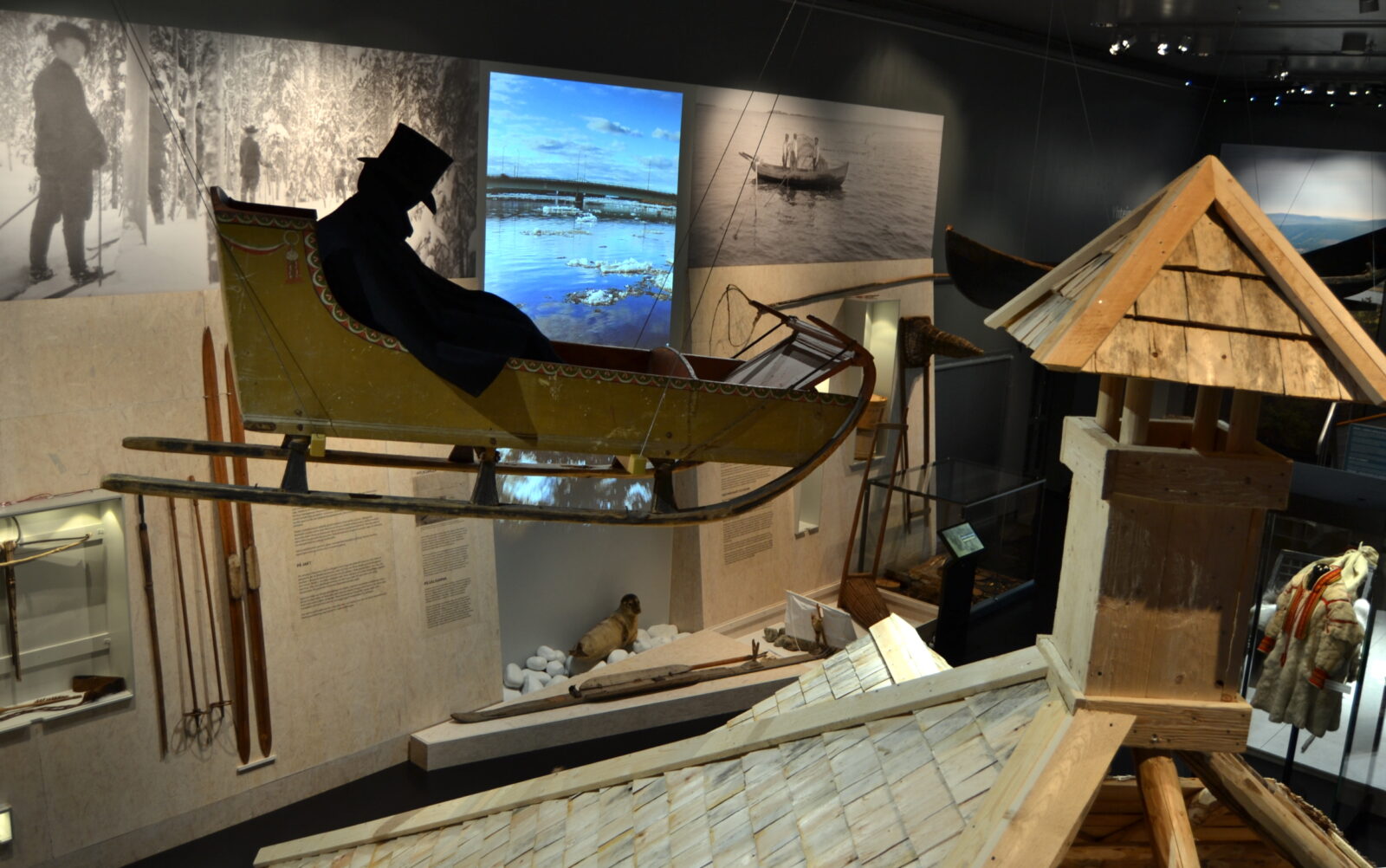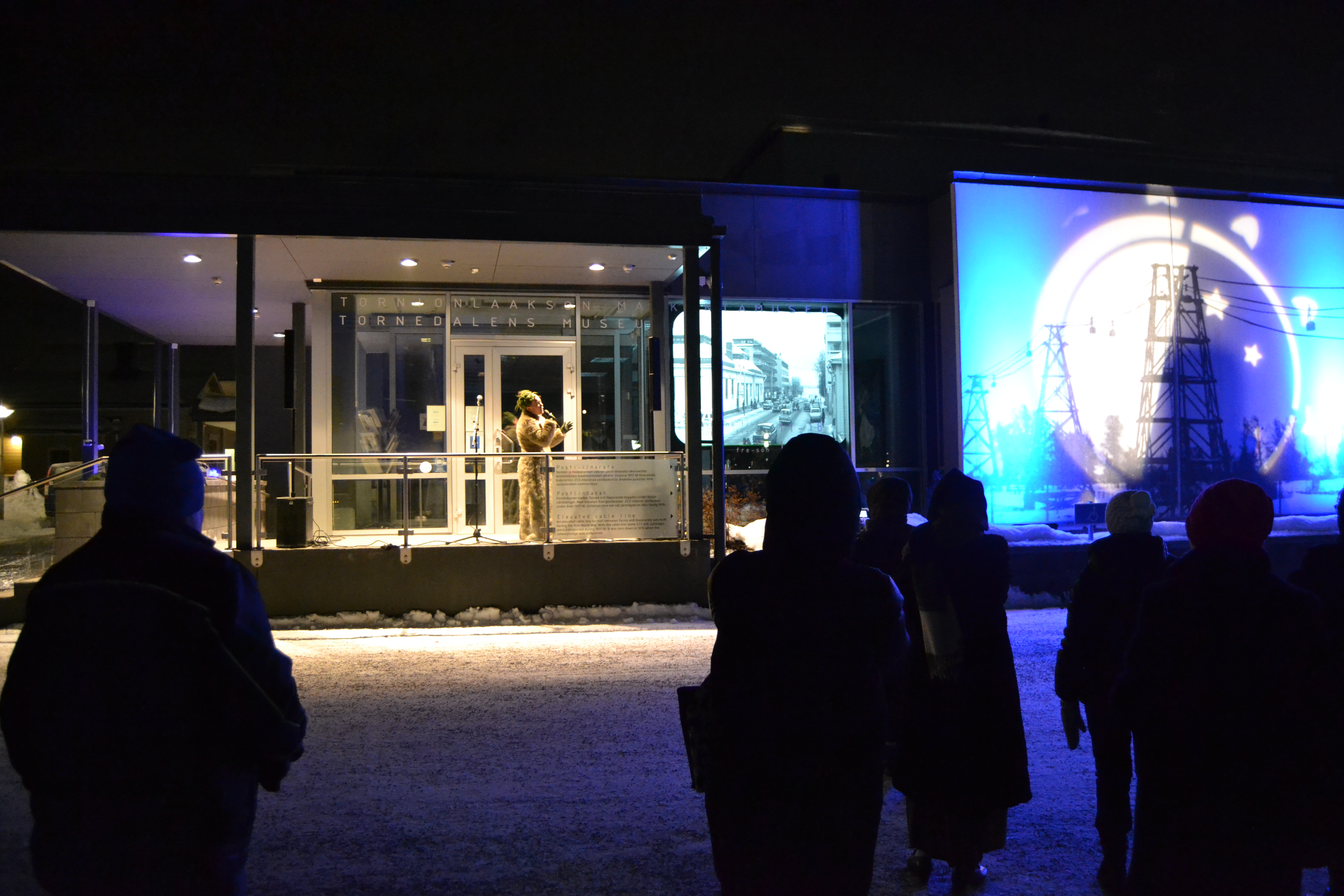Current Exhibitions
The first part of the permanent exhibition called Encounters on the Border showcases Torne Valley culture and history on both sides of the Finnish-Swedish border. The second part of the permanent exhibition, called Our Cities on the Border, tells the history of Tornio and Haparanda. We also have 4 or 5 shorter term exhibitions per year. These focus on different aspects of current phenomena and the history of the area.
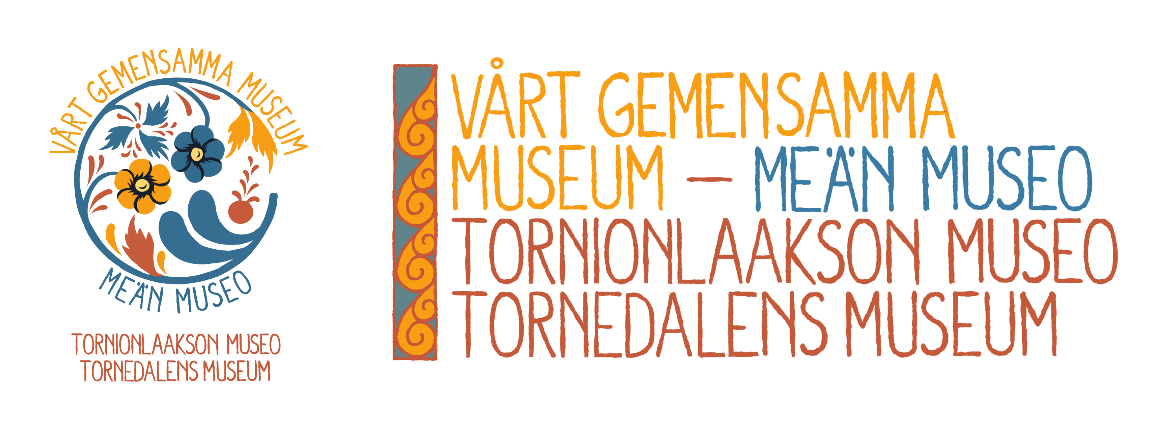
Current temporary exhibition
Wish You Were Beer – About Beer and Brewing in Finland and Tornio
14.11.2025.–2.8.2026
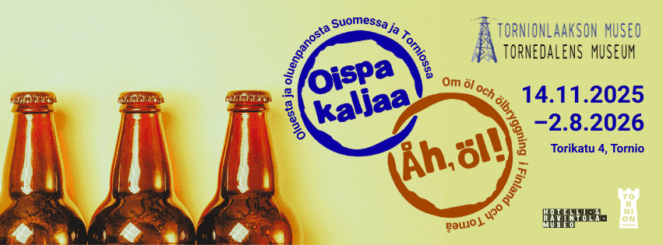
The exhibition explores the long history of beer in Finland and highlights Tornio’s own brewing heritage.
In February 2026, it will be 150 years since the first batch of beer from the new industrial brewery on the eastern side of Suensaari was tasted in Tornio. Torneå Bryggeri Aktie-Bolag was Tornio’s first industrial enterprise, which later developed into the internationally renowned brand Lapin Kulta.
However, the tradition of beer drinking in Tornio goes back even further. Archaeological excavations in the city have uncovered objects related to beer consumption dating back to the 17th century, such as remnants of passglas cups and humpen tankards. These imported European items were once part of everyday life in many bourgeois homes.
The exhibition explores beer from multiple perspectives – from creation myths to the decline of medium-strength beer. Visitors can learn about beer production, different beer styles, and the factors influencing beer characteristics. The exhibition also delves into the role of beer in people’s daily lives, celebrations, and myths, as well as society’s regulation of beer culture. Photographs, objects, and advertisements from various periods evoke memories of beer from past times.
The loaned exhibition from the Hotel and Restaurant Museum has been supplemented with sections on Tornio’s brewery and beer history, as well as objects from the Museum of Torne Valley’s own collections. An unusually extensive collection of medium-strength beer bottles from the Finnish collector Kalle Autio is also on display.
Past exhibitions
All Points North – Continuation War Barracks Areas from Vaakunakylä to Hirsikankaanmäki
26.9.–26.10.2025
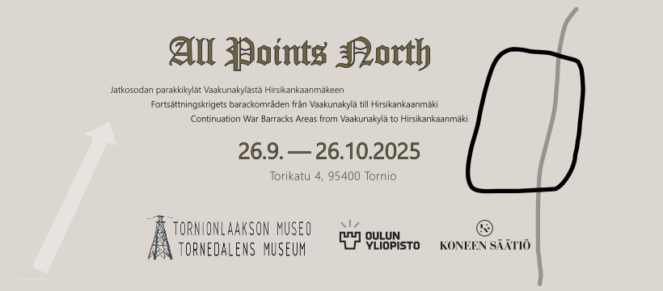
How are the German barracks areas visible in the history and present of the areas? What was their influence and how are they remembered?
The exhibition is based on the research results of Oulu University’s project An archaeological perspective on inequality in welfare society: Oulu Vaakunakylä and its communities 1942–2025.
The focus of the research is the residential communities in Vaakunakylä in Oulu’s Hietasaari in the post-war period. A local viewpoint is brought to the exhibition by research on the German veterinary center in Hietakankaanmäki in Kaakamo in Alatornio.
Visual artist Ari Björn uses art to interpret the project’s research results, as well as history, stories, and finds from the excavations. The exhibition combines archaeological research, oral histories, archive material, and contemporary art.
Exhibition consept, artworks and visuals: Ari Björn / Art & Process
Researchers: Oula Seitsonen, Tuuli Matila, Marika Hyttinen, Aleksi Kelloniemi ja Annemari Tranberg
From Torne River to Paris: Dipnet fishing on the way to Unesco
6.6.–14.9.2025
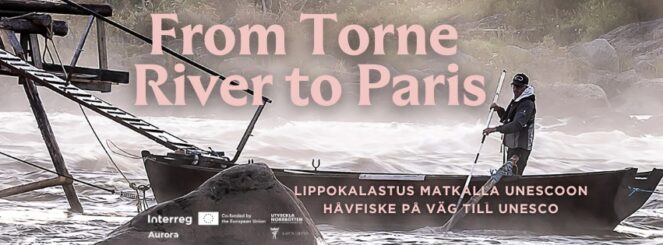
The multinational nomination Torne River Dipnet Fishing – Living Heritage across the Swedish-Finnish border, submitted in spring 2025 to UNESCO’s Representative List of the Intangible Cultural Heritage of Humanity, is now being presented to the public in the form of an exhibition. The exhibition presents the cross-border dipnet fishing culture and introduces the 2003 UNESCO Convention for the Safeguarding of the Intangible Cultural Heritage.
The exhibition focuses on the nomination dossier, submitted to Paris with the signatures of the Ministers of Culture, but also introduces other Finnish and Swedish elements already inscribed on the list. The differences between intangible cultural heritage and World Heritage (as well as other UNESCO lists) are addressed clearly yet sensitively.
The exhibition consists of the following elements from the nomination dossier:
Answers in the nomination form
Ten photographs
A 15-minute documentary film
Letters of consent from the local community
The exhibitions main language is English, but all the texts can be found also in Finnish, Swedish and Meänkieli. The exhibition uses visual elements from the Torne Valley Dipnet Culture project.
In-house production.
At the Crossroads – The History of Railway Traffic at the Finland-Sweden Border
28 January – 18 May 2025

Haparanda and Tornio, Sweden and Finland, were connected by a railway link in 1919. Passenger trains between Tornio and Haparanda ceased operation in 1988. The rail connection is now electrified, enabling the return of passenger train services. Why was the connection originally built, what impact did it have on traffic, and why was it discontinued? Today, the railway link is once again seen as an important security gateway between Finland and Sweden, connecting these countries to Europe.
An in-house production.
Porträttiä, kielielämänkertoja ja ääniä Tornionlaaksosta ja Malmikentiltä
Porträtt, språkliga biografier och röster från Tornedalen och Malmfälten
Muotokuvia, kielielämänkertoja ja ääniä Tornionlaaksosta ja Malmikentiltä
Portraits, language biographies and voices from Torne Valley and the Mining Fields
27.9.2024–12.1.2025

The exhibition presents the linguistic life stories of the Meänkieli-speaking and Finnish-speaking inhabitants of Torne Valley and Mining Fields in texts, photos and videos. The exhibition sheds light on how different factors have influenced the preservation of Meänkieli and the Finnish language in Torne Valley families over generations. The exhibition is part of the research project “Linguistic life stories of Swedish Finns and Finnish speakers in three generations”. The language interviews for the exhibition and the exhibition have been carried out by Jaana Kolu, born and raised in Keminmaa (linguist and assistant professor / University of Eastern Finland and docent / University of Oulu).
The exhibition is part of the Museum of Torne Valley’s Vårt gemensamma museum – Meän museo jubileum year.
Ett enda brev från mor – The only letter from mother
27.6.–15.9.2024

Torne Valley tradition is the central theme of Jennie Lind’s “The only letter from my mother” exhibition. Jennie Lind was born in 1975 in Luleå and works mostly in Northern Sweden as a film editor and photographer. A short film documentary is the first part of the exhibition. The second part is an exhibition with photos from a family album from the 1930s, 1940s and 1950s from Torinen village in Torne Valley. Underneath the pictures there are texts in Swedish and in Finnish. Together, these become a personal family narrative of longing, loss and memories, which describe her Torne Valley traditions combined with modern times.
“Mie en ymmärä sanoja enkä puhuttua Kieltä”. I don’t understand words or spoken language.
“Mie Tunnen sen syvästi minussa”. I feel it deep within me.
“Mie halvaisin ymmärtää ja viä sanat etheenpäin”. I would like to understand and pass the words on.
The exhibition is part of the Museum of Torne Valley’s Vårt gemensamma museum – Meän museo jubileum year.
A woman’s voice – portraits of women from Torne Valley
9.3.–2.6.2024 (only in Finnish and Swedish)
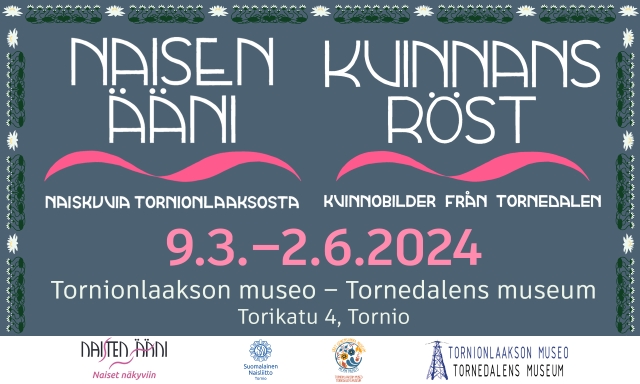
The exhibition features biographies of women from Torne Valley, which have been collected in the Finnish Women’s Association’s Naisten Ääni (Women’s Voice) project for the website of the same name. Through portraits, the exhibition highlights the influence of Torne Valley women on Finnish society and culture.
In cooperation with the Women’s Association of Tornio, Vocational College of Lapland and the Museum of Torne Valley. The exhibition is part of the Museum of Torne Valley’s Vårt gemensamma museum – Meän museo jubileum year.
The National Museum is coming for a visit
Saturday 17.2. 11-17 & Sunday 18.2. 10-16 Finnish time
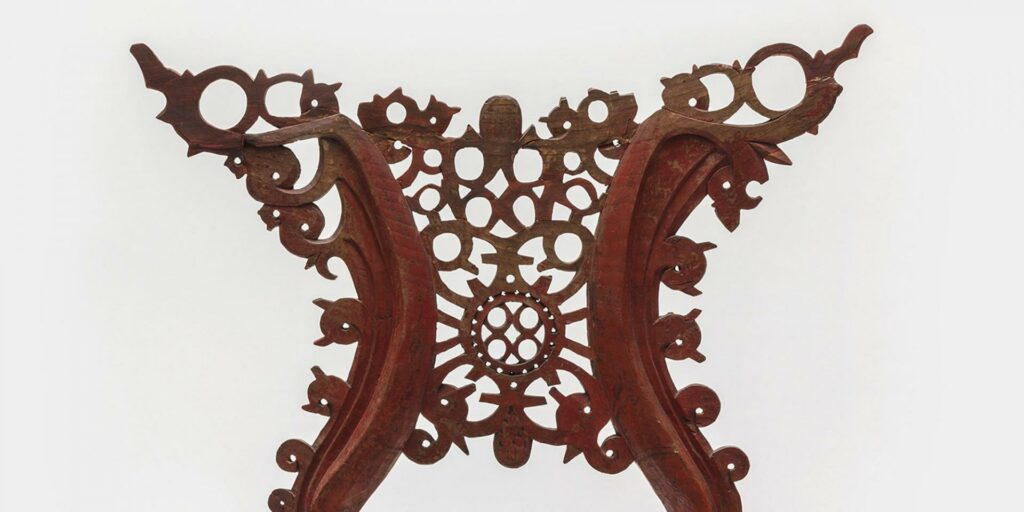
The National Museum of Finland, which is currently closed due to a renovation and extension project, will visit museums in different parts of Finland. The first stop is the Museum of Torne Valley on 17th and 18th of February 2024. The museum is open on Saturday 17.2. from 11.00 to 17.00 (Finnish time) and Sunday 18.2. 10.00-16.00 (Finnish time). Entrance to the museum is free during the weekend. The National Museum’s conservator, the museum technician and other experts will be on hand to present the exhibition’s museum classics objects.
During the visit of the National Museum in Tornio, you can see a cross-section of the museum’s classics from the last 8,000 years.
The Attack, painted in 1899 by Edvard “Eetu” Isto, a painter from Tornio, is one of the most famous Finnish political paintings. In the work, the two-headed eagle of Russia harasses the Finnish maiden and tries to deprive her of a law book. In the year of its completion Finland was a Grand Duchy of Russia and the Emperor Nicholas II issued his declaration known as the February Manifesto which greatly weakened the autonomy of Finland. The work became the most famous political painting in Finland.
In Tornio, you can also see one of the National Museum’s most famous objects: a rarity preserved from 1542, The Ruskon Kousa made of spruce root. In the 19th century, decorative kousas were used as bowls in parties and celebrations, but in the 16th century they were strictly a part of the tableware of castles.
From the archaeological collections of the National Museum, we present a stone age (from 6100 BC) rarity, The Moose Head of Huittinen. The delicate and very realistic soapstone figurine was likely a very valuable item at its time and is today one of the best known archaeological artifacts in Finland. It depicts an approximately one-year-old moose’s head.
The Treasure of Halikko, which originates from the turbulent 12th century, a turning point in Finnish history, consists of several silver objects. Called a masterpiece of the period’s artistic craftsmanship, the valuable ensemble consists of a gilded crucifix, a silver pendant and a string of pearls. The earthenware pot with the treasures in it was found by crofter Karl Ollikkala on the lands of the Halikko manor in 1887.
In addition The Original Moomin Figures from the late 1950s by Atelier Faun, The Glasses Worn by President Urho Kaleva Kekkonen in the 1970s, and The NATO pen with which Pekka Haavisto, who served as foreign minister in 2022, signed Finland’s NATO application are also on display.
